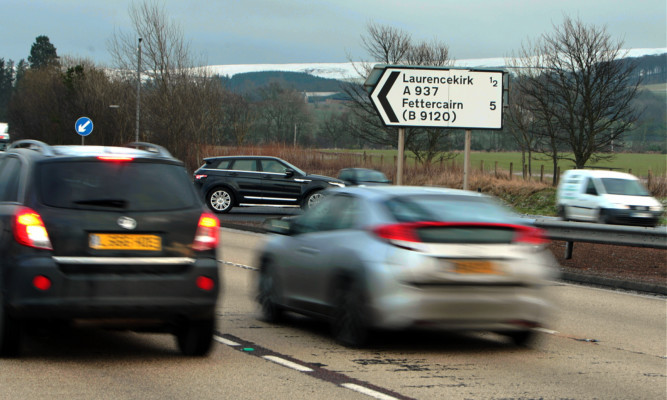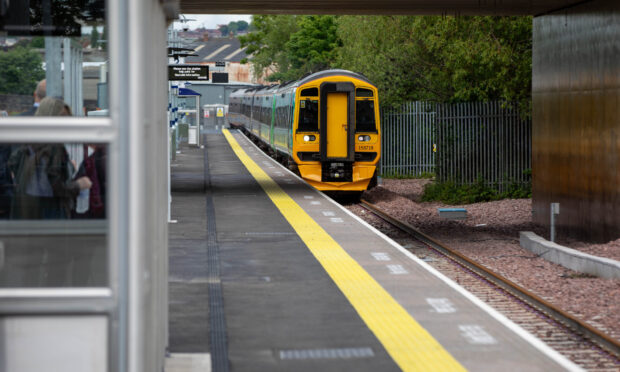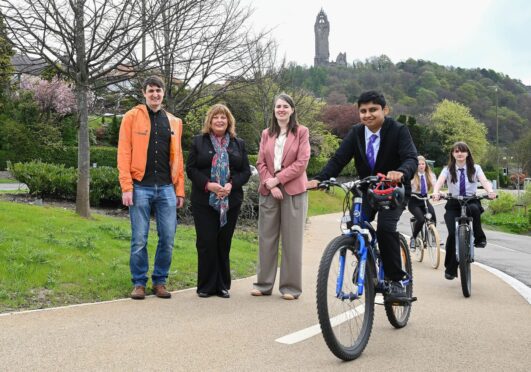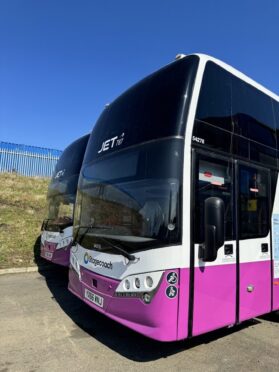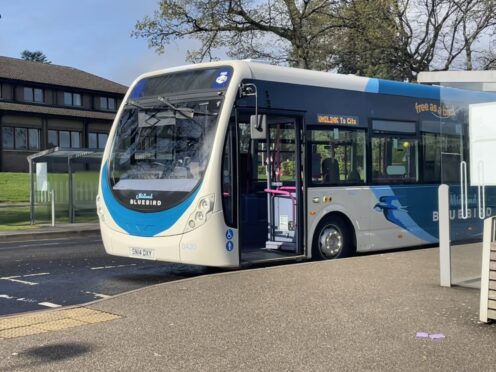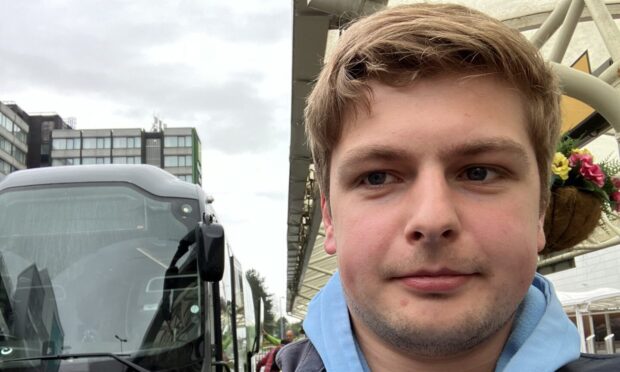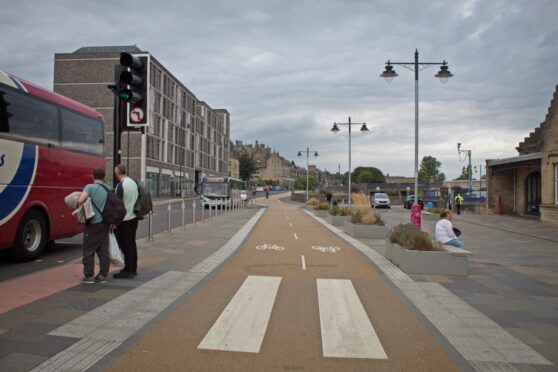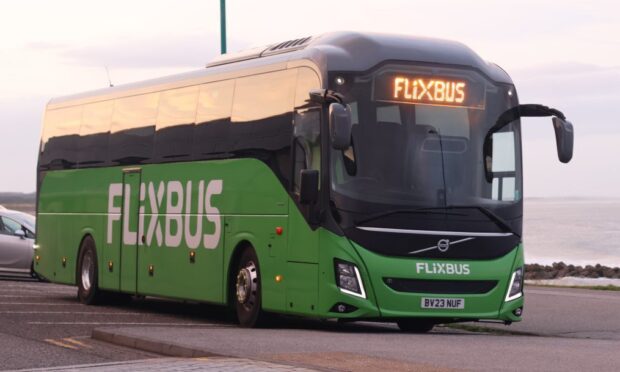The new Queensferry Crossing is already being used by more vehicles than it was built to cope with, transport bosses have revealed.
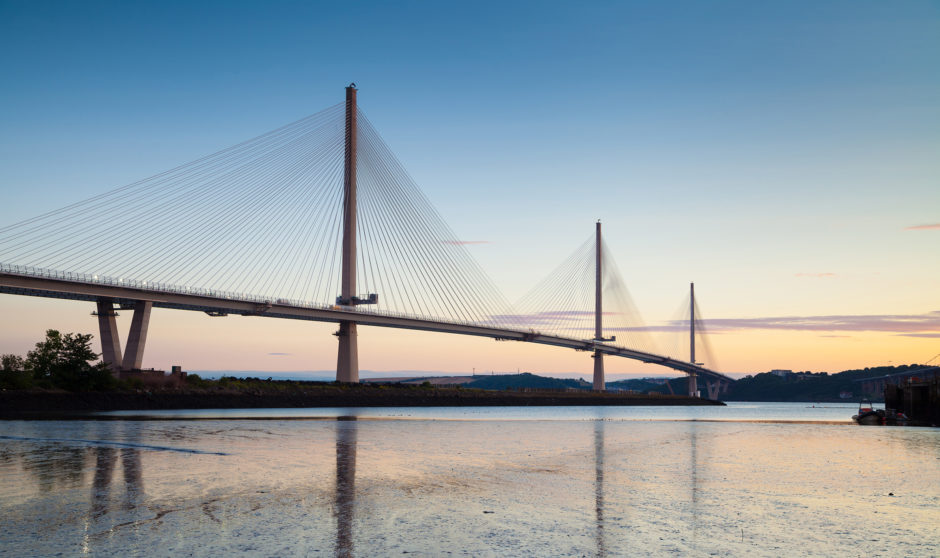
The alarming news comes fewer than three years after the £1.35 billion bridge was officially opened, with latest traffic data confirming the volume of traffic is beyond what the bridge was designed for, particularly during peak times.
Addressing councillors at the South and West Fife area committee, Scott Lees, head of transport maintenance for Transport Scotland, said: “There is this view that the new bridge was built and there should be no congestion.
“But it is important to remember that the Queensferry Crossing was modelled on the old Forth Road Bridge’s capacity of 70,000 vehicles a day and built as a replacement, it doesn’t increase the provision across the Forth.
“We are well past that now and are currently operating at 24 million vehicles per year at around 80,000 per day.
“It is clear that at peak times, there is more traffic than the bridge can cope with.”
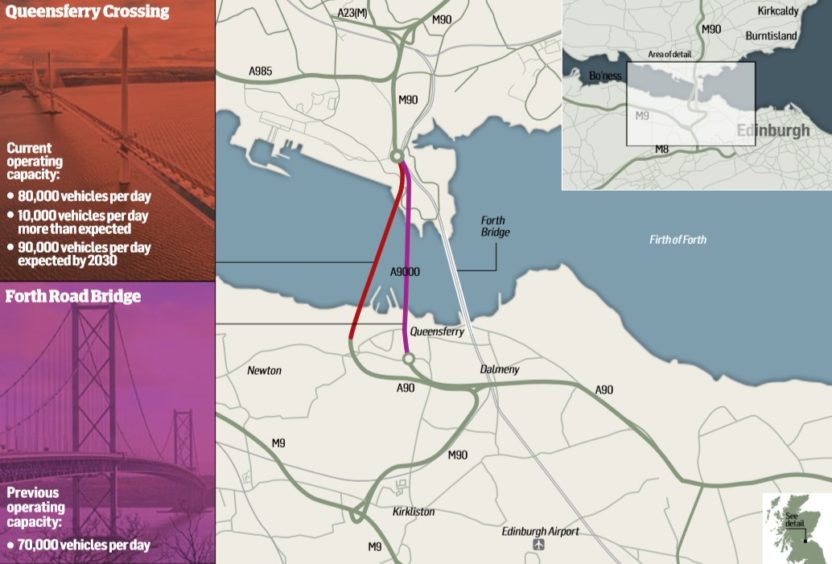
John Russell, operations manager at Forth Estuary Transport Authority, said the problem is being made worse by some drivers using slip roads on and off the main route as rat runs in a bid to dodge queues.
“Rat running actually adds to the problems.
“Drivers don’t actually gain any time. Even if you skip that line, you’re not beating the traffic, as you still have to rejoin. It’s completely psychological.
“If drivers would just stay on the main line, traffic flow would move much smoother.”
He said future traffic volumes would also be influenced by the developers’ desires to build more homes on either side of the crossing.
“We are already seeing land originally acquired for the bridge that has not been used being handed back and that, coupled with the increase in planning applications on both sides of the crossing, will undoubtedly play a significant part in the volume of traffic.”
With a 10-year operating plan in place, it is estimated vehicle numbers will continue to increase to around 90,000 per day over the coming decade.
Both Mr Lees and Mr Russell said the best way to cope with the traffic was to encourage more people to use public transport, adding a robust public transport strategy would be vital.
Conservative councillor Tony Orton asked about opening the Forth Road Bridge, even peak times only, to ease the congestion.
Mr Russell said that would require significant changes to the existing local road layout, a move that transport bosses had ruled out.
He said: “I don’t think you’d get as much benefit as you might think, as the capacity at either end is very limited, so you’d just be moving the bottleneck somewhere else.
“If it was a local only route, you might get very limited benefits but I have no idea how you would manage and enforce that.”
He added because an act of parliament was passed to change the Forth Road Bridge to a public transport gateway, the legislation would have to be changed before any alternative scheme could go ahead.
Good news as roadworks come to an end
There was some good news for motorists using the Queensferry Crossing this week with confirmation existing traffic restrictions in place on the M90 approach have ended.
The roadworks, the cause of frustration and congestion for motorists, particularly at peak times, had been in place to allow for the completion of scheduled maintenance work on the new bridge.
Mr Russel said: “Traffic restrictions that had been causing some issues have now been completely lifted and we operating a free corridor to and from the crossing with no problems other than unplanned incidents such as accidents.
“We are now in a period of transition which will last until March and we are currently analysing the traffic data that has, and continues to be, recorded which will help shape future policy of how we manage the crossing.”
However, despite technology in place and operational to monitor traffic flows, it has emerged the speed limit of 70mph on the main approach and the crossing itself was not being currently enforced.
It could be as late as the summer before it is.
Mr Lees said: “After an initial period of bedding down and as the technology becomes more reliable, we will introduce the enforcement of the speed limit but that is still subject to Police Scotland approval.
“It is apparent that some people are flying through at alarming speeds.
“The police and procurator fiscal need to be confident that the system in place is accurate and robust to allow enforcement and that’s work we need to do this year and we anticipate it will be the summer before that is in place.”
Trespass opportunities can’t be ruled out despite new measures
The operators of both the new Queensferry Crossing and Forth Road Bridge say they cannot rule out people trespassing and climbing the structures, despite a rigorous overhaul of security at the sites.
Mr Russell made the admission following a review of bridge security in the wake of a major breach in June 2019 when a group of thrill seekers managed to evade security on all three bridges scaling to the top of the Forth Road Bridge.
The group broadcast the incident on social media before descending from the tower and escaping the scene without being detected.
Four people were later arrested after being apprehended on the Forth Rail Bridge during a similar stunt.
Mr Russell said the invasion had been due to “lapses by a contractor” which has been addressed and patrols have been increased
“We met with Police Scotland in December to discuss the issue and are considering upgrade to the security camera system and relocation of CCTV as well as a review of security across all three bridges spanning the Forth.
“We must accept that it is a very difficult problem to stop and that the bridges are an open public space.
“The latest incident was not the first time in my 30-year career that this has happened.
“There have been at least three similar incidents that I can recall.
“This was a highly organised attempt to gain access by people, who I have no doubt, scoped out and planned in great detail their attempt to get onto the bridge.
“It’s very difficult to stop and despite what we do if they are determined they will get access.”
